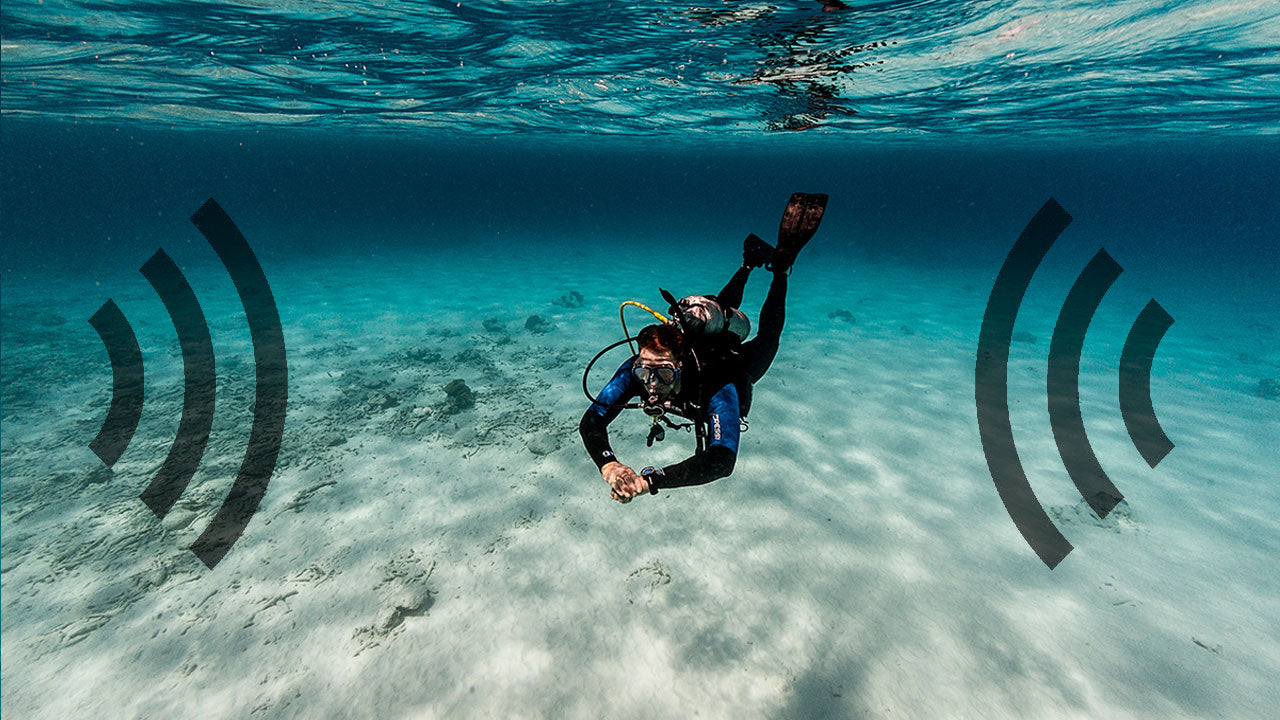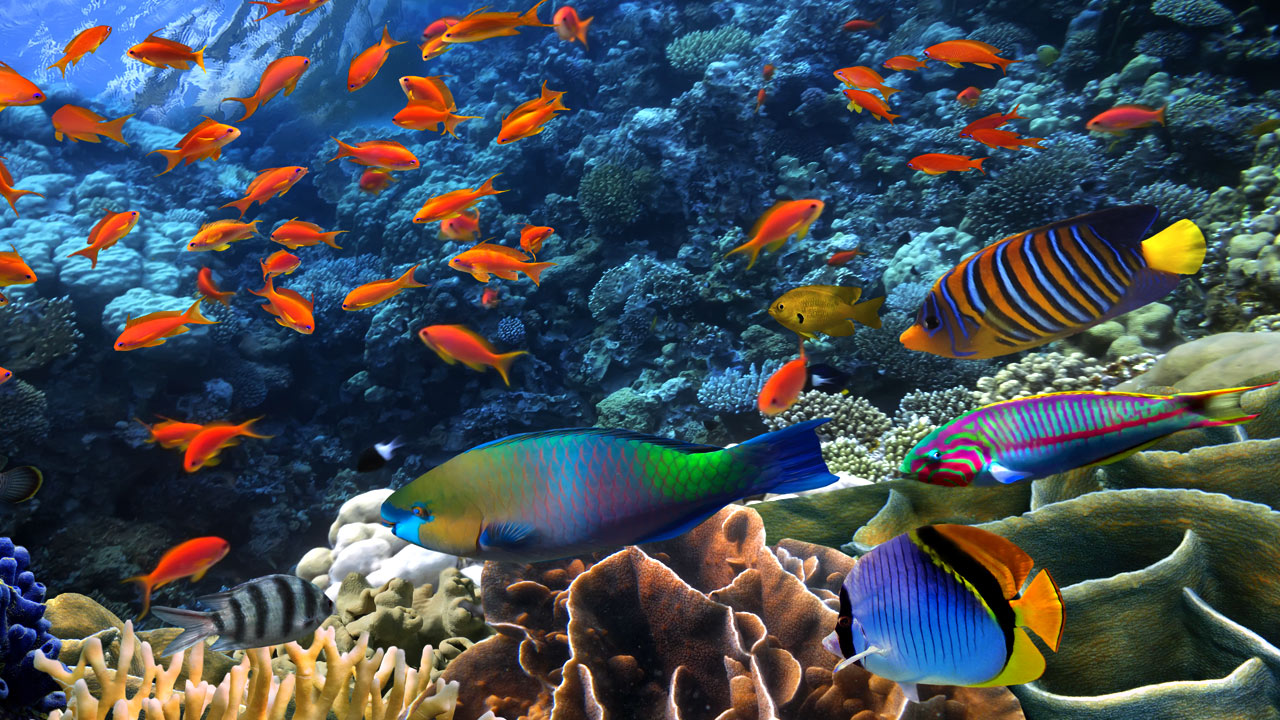Ocean Sound and Underwater Noise Pollution

The more you dive and learn about the ocean, the more you understand that the “silent world” beneath the waves is, in fact, not so silent. The water column and the sea bed are full of vibrant sounds: clicks, whistles, crunchings, howls, snappings, songs, and even more low-frequency sounds that the unaided human ear is not able to catch. And there is a good reason for this lively cacophony of biological clamor: in gloomy light conditions, sound is the best medium for transferring information. Because underwater sound travels much faster than light, marine animals rely greatly on their hearing in various behavioral contexts. This is where the issue of underwater noise pollution comes into play. The man-made noise coming from coasts and offshore activities drowns out the natural sounds of the ocean disrupting this fine-tuned soundscape and causing much harm to marine life. Before we go into details about this issue, let us first find out more about the ways animals use sound underwater.
How Do Animals Underwater Use Sound?
Aquatic animals are able to hear over a vast range of distances. They perceive sounds made by members of their own species, as well as those made by their prey or predators. They also use sound to navigate underwater (echolocation) and to understand their environment. Thus they can both produce sound and listen to it.
Sounds are particularly useful underwater as they transmit a huge amount of information over great distances. By changing the pitch, frequency, rate, length, and structure of a sound, fish and marine mammals convey different messages, most of which are related to mating, territoriality, or maintaining group cohesion.
Generally, fishes produce sounds in a couple of different ways: by rubbing body parts together, known as stridulation (e.g., sea catfish uses spines on its fins to produce squeaking sound); by rapidly contracting the muscles around their swim bladder, which produces vibrating, drumming or even whistling sounds (e.g., if a squirrelfish or a soldierfish is approached by a predator, it emits loud grunting sounds to deter the enemy and warn other members of its species); by grinding their teeth; via hydrodynamics (quick changes in speed and direction).
Marine mammals such as dolphins and whales make sounds by moving and releasing air through their blowholes. They also use the larynx to mend the sound into whistles or air sacs near blowholes to produce high-frequency signals. As they are very social creatures traveling over great distances in groups, sounds as means of communication are extremely important to them. Apart from that, most cetaceans (including dolphins) use sound to “see” and navigate in their environment. They emit a series of high-frequency sound waves into their surroundings, which hit various objects and echo back being perceived by a special organ in the whale’s head. For the records, the same principle is used in naval echolocation.
What Are the Sources of Underwater Noise?
The underwater noise can be split into two big categories: natural and anthropogenic. The former comes from a range of natural sources, such as surface waves, rains, storms, cracking ice, lightning strikes, earthquakes, and hydrothermal vents, as well as from marine life described above. The natural marine soundscape has been forming for an extended period of time that is hundreds of thousands of years. It indicates that the animals living underwater have adapted well to the sounds of natural physical processes. They evolved in the presence of these sounds developing their hearing systems accordingly.
The anthropogenic noise originates from human-made sources like commercial and recreational vessels, pile driving, sonar navigation, seismic surveys, and other shore and offshore activities.
For instance, seismic airguns are used in a search for oil and gas deposits deep below the ocean's floor. During this process, a vessel tows a seismic air gun through the water, while the air gun shoots extremely loud blasts of compressed air to the ocean bottom and deep beneath the seafloor. These blasts are repeated every ten seconds 24 hours a day for several weeks on end. Airguns generally emit sounds at low frequencies between 10-500 Hz.
High-intensity sonar used by navies to scan the water column to detect obstacles and locate submarines can emit sounds of 235 decibels, which is as loud as a rocket blast.
Another instance is pile driving, which is used for the installation of foundations for docks, bridges, and offshore oil and gas platforms. To install a pile, a heavy weight is lifted and dropped onto the pile producing a loud impulse sound that reverberates through the water and the ocean floor.
What Problems Does Anthropogenic Underwater Noise Present to Animals?
Human-made noise levels in the oceans have doubled every decade for the past 60 years of ever-increasing industrialization. Nowadays, the presence of noise coming from commercial vessels is ceaseless and considered to be the main source of man-made sound underwater. Chronic noise causes stress which in turn affects the health of marine animals. Moreover, the anthropogenic underwater noise is progressively masking the acoustic world of marine animals. Consequently, it decreases their ability to communicate, navigate, detect prey, escape predators, and find mates.
Furthermore, the noise from airguns can cause the marine environment to be heavily degraded over large areas forcing the affected animals to abandon their natural habitat. What is more, the blasts from airguns are so loud and constant that they can disturb the vital behaviors of fish, dolphins, whales, and turtles causing temporary or permanent hearing loss.
Cetaceans in particular are acutely threatened during airgun surveys and military exercises when warships use intense sonar. They seem to change their regular behavior in panic to escape the deadly noise, diving too deep, which causes decompression leading to lethal outcomes. The history of the past two decades shows many tragic examples where hundreds of fatally injured or dead animals with their ears bleeding were found on shores after such intense military sonar exercises.
What Are the Possible Solutions to the Problem of Underwater Noise Pollution?
Underwater noise pollution is a serious threat to marine life. But it also can be solved easier than the major problems of ocean pollution, acidification, or climate change.
For example, in 2017 the Vancouver Fraser Port Authority started asking ships to simply slow down when going through the Haro Strait, where the southern resident killer whales are feeding in late summer. Slower ships produce less noise and it can be the easiest solution at hand to deal with the issue of noise pollution.
Additionally, redesigning propellers to make them quieter and re-routing shipping lanes in order to avoid overlapping major shipping routes with critical habitats of ocean animals should bring about tangible changes in the relatively short run.
Likewise, inventing quieter ways of hammering during the pile driving and gentler ways of doing seismic surveys can help achieve profound changes as well. In fact, there are already some incentives for using quieter technologies. The European Union for instance had a healthy marine system directive for 2020. And one of the ways that they define a healthy marine system is by how much noise is going in these waters.
Lastly, developing clean energy sources should also reduce the usage of fossil sources and hence the need for airgun explorations in the long run.
Although most waters remain completely unregulated when it comes to ocean noise, scientists still believe that there is real momentum right now in policy aspects, and more key role institutions pay attention to this issue. We already have enough knowledge to clearly state that quieter waters are healthier waters. Nevertheless, now scientists are trying to come up with more details and facts to support the whole movement of ocean quietening.
While ocean noise pollution may not seem like the biggest issue, we have at the moment, it adds up to the wide range of negative effects caused by human activity. Unfortunately, all of these impacts are not isolated from each other, they are interconnected and they multiply. Therefore, we need to educate ourselves and do what’s in our power to help preserve the health of marine ecosystems.
9 Easy Things You Can Do to Save the Ocean
Read more about what you can do on your own, at home, or in your personal life to help save the ocean.





